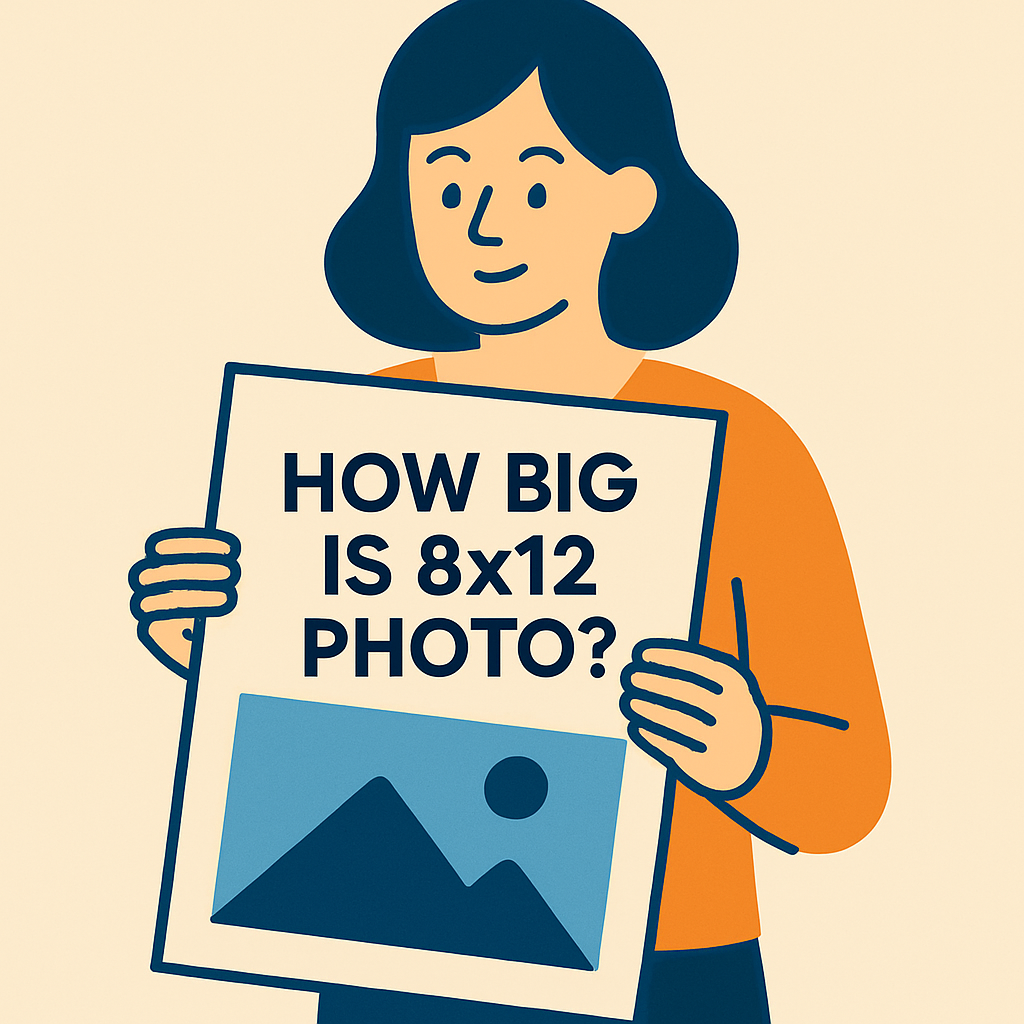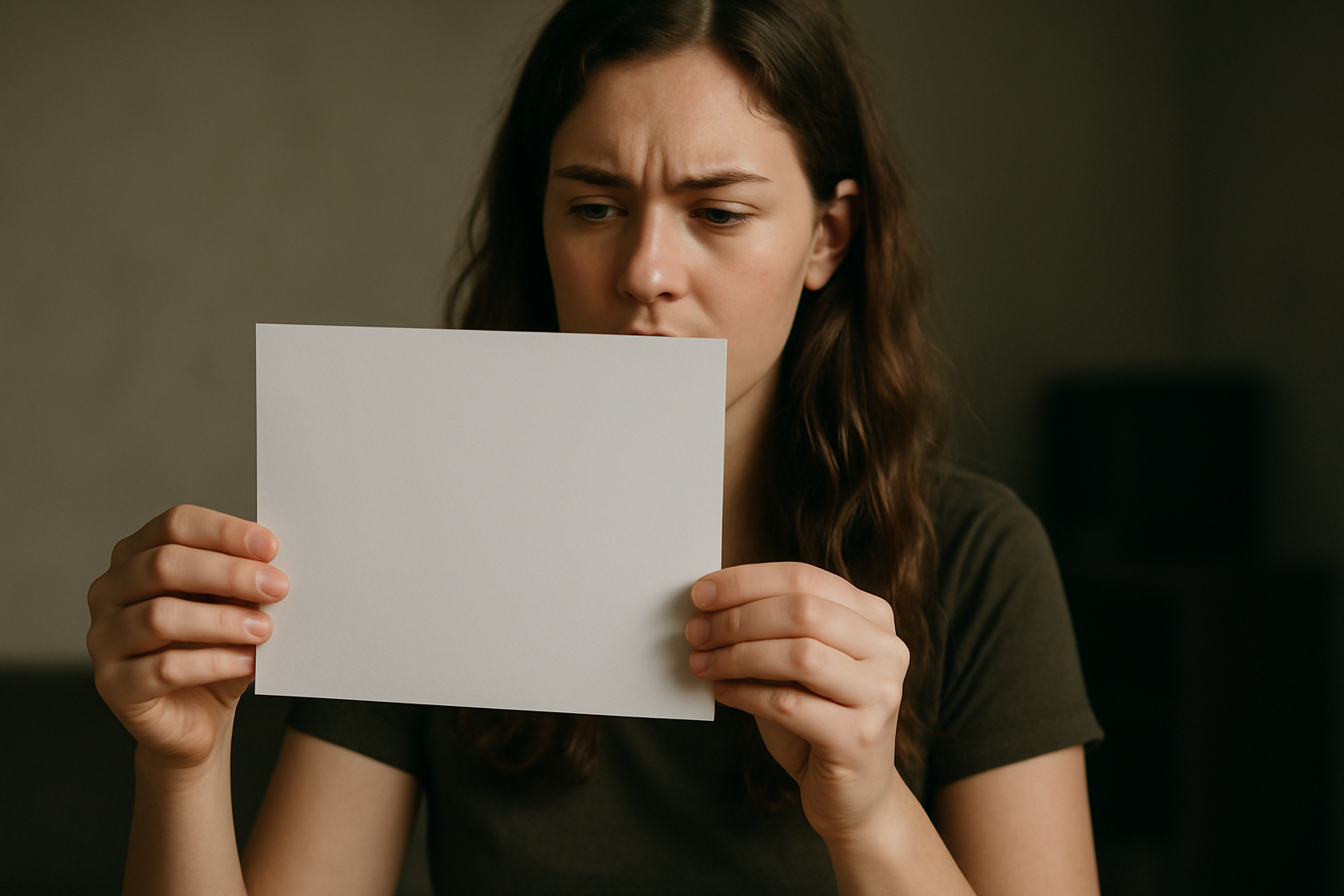
You hate ordering prints that don’t match your screen and wind up cropped or soft. If you’ve ever typed “how big is 8×12 photo” into a search bar, you’re not alone. Getting size right is one of the fastest ways to stop wasting prints and time, and to keep compositions intact.
This guide gives exact physical and pixel targets, framing tips, and simple preflight checks for both digital and film workflows. That means sharper final prints, fewer surprises at the lab, and a faster workflow. It’ll also bust a common myth many photographers still trust about resizing before printing.
It’s perfect for hobbyists, portrait shooters, wedding photographers, and anyone making photo books or wall hangings. You’ll see why aspect ratio, viewing distance, and simple matting choices change what image size works best. If you shoot with a phone, DSLR, or scan negatives, keep reading because the fix is simpler than you think.

Exact physical dimensions of an 8×12 photo
If you’re wondering how big is 8×12 photo, it measures exactly 8 inches by 12 inches. In metric, that’s 20.32 cm by 30.48 cm. The diagonal spans about 14.4 inches.
The aspect ratio is 2:3, the same shape as classic 35mm film and many modern cameras. That ratio keeps compositions looking natural while scaling cleanly from 4×6 to 8×12.
In the hand, an 8×12 feels like a “medium” print—substantial on a desk and confident on a wall. It’s large enough to show detail without dominating a room.
Keep in mind labs sometimes trim a sliver during processing. I leave a tiny safety margin near edges to protect signatures, frames, or text from being cropped.
Pixel dimensions & DPI requirements for quality prints
For a sharp 8×12 at 300 DPI (dots per inch), target 2400 × 3600 pixels. At 200 DPI, 1600 × 2400 pixels is acceptable for casual viewing, with a small loss in fine detail.
DPI describes print density, while PPI (pixels per inch) describes your file. In practice, match your file’s pixel dimensions to the print size times your chosen DPI.
Smartphone files often clear the bar for 8×12, especially at 300 DPI, but heavy cropping can hurt. If you must upscale, do it gently and preview at 100% before sending.
When clients ask “how big is 8×12 photo in pixels,” I translate size into targets: 2400 × 3600 for premium, 1600 × 2400 for budget. Choose based on viewing distance and importance.
Viewing distance & perceived detail
The 8×12’s 14.4-inch diagonal suggests a comfortable viewing distance near 1.5× the diagonal—about 1.8 feet, or roughly 22 inches. That’s a natural couch-to-wall distance.
Stand farther back and your eye blends details, so 200 DPI can look great. Lean in close and 300 DPI better preserves texture, eyelashes, and fabric weave.
In my hallway, kids press nose-close to their portraits, so I print at 300 DPI. In living rooms where people step back, 200–240 DPI often strikes a nice balance.
Glare also affects perceived detail. If the print lives in bright light, a semi-matte finish can help maintain contrast without distracting reflections.
Framing, mats, and standard frame compatibility
Custom 8×12 frames are straightforward, but in some regions they’re less common than 8×10 or 11×14. I check local shops first, then online if I need that exact opening.
A popular route is an 11×14 frame with a mat window cut to 8×12. White or colored mats add breathing room, protect the print, and make the image feel gallery-ready.
Another clean option is a 12×18 frame with an 8×12 mat opening. The 2:3-to-2:3 pairing keeps borders even, giving the print a modern, proportional look.
For standards and odd sizes, I often consult a concise frame size guide. It helps me plan mats and avoid awkward cropping later.
Photo books vs loose 8×12 prints
Some photo books labeled 8×12 are slightly larger to allow trimming and binding—think around 8.25″ × 12.25″. You’ll also sacrifice a bit to the inner gutter.
A loose 8×12 print is exactly 8 by 12 inches edge-to-edge. A book page is that size plus bleed, so full-bleed images get trimmed to fit and can lose tiny edge details.
When designing spreads, I keep critical text and faces at least 0.25 inches from the trim and gutter. It preserves breathing room and prevents clipped elements.
If specs are unclear, I check the printer’s 8×12 book specs. A few minutes with the template saves reprints and surprises.
Cropping and aspect-ratio considerations for 8×12
Maintain the 2:3 aspect ratio when cropping to 8×12. Full-frame and most APS-C files match this naturally, so there’s no distortion—just a straight, edge-to-edge fit.
Phones often shoot 4:3, which means you’ll trim a little from the top and bottom for 8×12. Compose with extra headroom and footroom to protect important details.
In the crop tool, set the ratio to 2×3 and drag the frame to safeguard eyes, fingertips, and text. I also leave a small “safe” zone near edges for lab trimming.
For sports and wildlife, anticipate the 8×12 by giving subjects lead room. That space keeps motion dynamic without sacrificing wingtips, paws, or the ball.
Printing materials and finish options common for 8×12 prints
Glossy paper amplifies contrast and color pop, great for landscapes and night scenes. Luster or semi-matte tames reflections while keeping crisp detail—my go-to for portraits.
Matte fine-art papers offer a painterly look and soft gradients. They handle skin tones beautifully, though they trade a touch of sharpness for texture and elegance.
Metallic or pearl finishes add shimmer to chrome, water, and city lights. Use them sparingly for images that benefit from a reflective punch without overwhelming the subject.
Before choosing paper, confirm how you’ll display it. I cross-check common frame sizes with a quick frame size chart so the paper choice complements matting and glass.
Comparison: 8×12 versus other popular print sizes
Compared to 8×10, an 8×12 is two inches longer on the long side. Moving from 2:3 to 4:5, you’ll usually crop top and bottom, which tightens headroom and footroom.
A 5×7 is smaller and a different shape, trimming more from the sides of a 2:3 image. Subjects near the edge can get clipped if you don’t compose with margin.
When clients ask “how big is 8×12 photo compared to 8×10,” I show overlays. Side-by-side crops reveal exactly where inches are lost and how the composition shifts.
If you anticipate multiple print sizes, compose a little looser in-camera. That flexibility makes 8×12, 8×10, and 5×7 all achievable without compromising the story.
Practical use cases for an 8×12 print
I lean on 8×12 for medium-sized family portraits where expressions matter. It’s large enough to see eyelashes and fabric texture without needing a massive frame.
On gallery walls, 8×12 plays well in grids or triptychs. The consistent 2:3 shape keeps lines tidy, and mats give each image a bit of breathing room.
For travel series, I’ll sequence several 8×12 prints along a hallway. Each scene stands on its own, yet the size keeps the narrative flowing at a comfortable pace.
In photo books, the 8×12 footprint allows full-bleed dramas and clean white borders. It balances impact with portability when you pass the book around.
Practical checklist for preparing files for an 8×12 print
Here’s the quick preflight I run before ordering an 8×12, whether framed or bound.
- Set pixels: 2400×3600 for 300 DPI; 1600×2400 for 200 DPI.
- Confirm 2:3 aspect ratio and leave a small safety margin near edges.
- Choose finish: glossy for pop, luster for portraits, matte for fine-art feel.
- Plan display: verify mat opening and frame size to avoid unintended crops.
What People Ask Most
How big is an 8×12 photo in centimeters?
It’s 8″ × 12″, which equals exactly 20.32 cm × 30.48 cm; the aspect ratio is 2:3 and the diagonal is about 14.4 inches (≈36.6 cm).
What pixel resolution do I need to print an 8×12 photo?
For high-quality prints I target 300 DPI, which is 2400 × 3600 px; for acceptable quality you can use 200 DPI, which is 1600 × 2400 px, but lower DPI reduces fine detail.
Can I put an 8×12 photo in an 8×10 frame?
No — an 8×12 print is larger than an 8×10 opening, so you’d need to trim or crop the image to fit or instead use a larger frame with an appropriate mat.
What is the best viewing distance for an 8×12 print?
I recommend around 1.8 feet (≈22 inches); viewing farther makes the eye perceive less detail, which can relax your DPI requirements.
How does an 8×12 photo compare to an 8×10 photo size-wise?
An 8×12 is 2 inches taller than an 8×10 and uses a 2:3 aspect ratio versus 8×10’s 4:5, so switching between them changes the crop and can shift or remove elements top-to-bottom.
What frame sizes fit an 8×12 photo with a mat?
You can use a custom 8×12 frame or a larger standard frame like 11×14 with a mat window cut to 8×12, and I often recommend white or colored mats for pleasing spacing and presentation.
Final Thoughts on 8×12 Prints
Figuring out how big is 8×12 photo won’t be guesswork anymore, and it’ll let you pick prints and frames with confidence. If you started this article worried your prints would miss the frame or look soft, we’ve addressed that exact worry by walking through clear measurements, resolution guidance, framing options, and a simple preflight checklist. Photographers, parents putting albums together, and anyone arranging wall displays will find the biggest payoff from following the guidance.
But remember labs, book suppliers, and binding allowances can shift measurements and crop margins, so don’t assume every provider uses the same specs and you may need to allow for small adjustments. Viewing distance and mat windows also change perceived detail, so you’ll want to plan accordingly for where the print will live. Try proofing one print or mockup in your intended frame and space—you’ll quickly see how these tips simplify choices and make your images look as sharp and well-composed as you hoped.


0 Comments